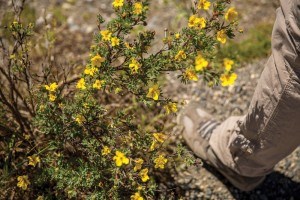Spring improvements to bridge infrastructure
Beginning this spring, Parks Canada is investing in a number of infrastructure improvements in Jasper National Park to ensure a world-class experience for the millions of visitors to this magnificent Rocky Mountain Parks World Heritage Site.
The following bridge repair work will allow visitors continued safe access to the area:
April 14–May 20: Miette Bridge (93N) repairs
May 1–6: Moberly Bridge deck renailing
Parks Canada is taking steps to minimize the impact this work will have on community members and visitors. The construction crews will be working during daylight hours, seven days per week. The work will not take place on long weekends or statutory holidays when traffic is heaviest.
Delays may vary depending on traffic volume, but are expected to be up to 20 minutes, as temporary road closures are necessary to ensure motorist safety. We will ensure that one lane remains open at all times so there are no significant delays for the public. Allow yourself additional travel time if you plan on exploring the surrounding areas.
For the most up-to-date information on road conditions and road closures, visit Alberta’s Official Road Reports at www.511.alberta.ca.
Watch this space for further updates throughout the season for upcoming infrastructure improvements.

It’s tick-ing season!
Here are some par-TICK-ulars about ticks that you may need to know as we spring into tick season:
Ticks are related to spiders and resemble tiny watermelon seeds with legs.
They have sensory organs in their front legs that can detect carbon dioxide, odours and heat given off by hikers.
When a hiker passes within reach of a tick, it climbs on, and then crawls around the body looking for a good site to attach itself—they love the back of the neck.
It only takes a few hours for the tick to attach itself with its mouthparts, and they can easily go unnoticed during this time.
Their salivary glands produce a unique substance that prevents them from being easily detached.
If she remains attached, a female tick may feast on a blood meal for up to seven days, increasing her original weight by more than 100 times before dropping to the ground and laying eggs.
To protect yourself against ticks:
When walking in tall grass or woods, walk on cleared trails wherever possible.
Wear light coloured clothing, tuck your top into your pants and tuck your pants into your boots or socks.
Put insect repellent containing five per cent Permethrin onto clothing and insect repellent containing DEET on all uncovered skin. Reapply as frequently as directed on the containers.
Check clothing and scalp (covered or not) when leaving an area where ticks may live. Check in folds of skin. Have someone help you check hard-to-see areas. When a tick is located, remove it immediately. Check the whole body, and don’t stop when you find one tick, as there may be more.
Regularly check household pets.
If you find a tick attached to your skin:
Use tweezers to remove it. Grasp the tick’s head and mouthparts as close to your skin as possible, and pull slowly until the tick is removed. Be careful not to twist, rotate or crush the tick during removal.
After removing the tick, use soap and water to wash the spot where you were bitten. You may also disinfect the bite area with alcohol or household disinfectant.
Parks Canada
Special to the Fitzhugh
